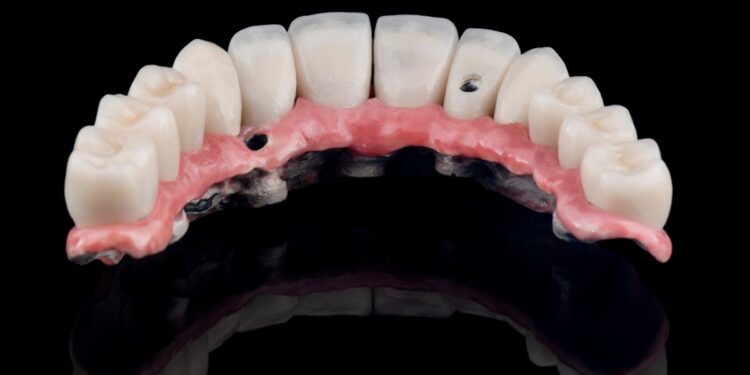Introduction to All-in-One Dental Implants
Modern dentistry offers many solutions for missing teeth, but few are as impactful as dental implants. These innovative restorations have set a new standard for patient comfort, confidence, and functionality. Among the most cutting-edge options available today is the ‘all-in-one’ dental implant solution, a comprehensive treatment concept designed to deliver both efficiency and exceptional results. As more people seek quick yet reliable full mouth restorations, full mouth dental implants Dallas, TX has become a popular term representing next-level care in this growing field.
These all-in-one systems provide an integrated approach, uniting diagnosis, surgical placement, and restoration within a streamlined process—often at a single location and sometimes in a single day. The concept minimizes disruption to your daily life while maximizing function and aesthetics. But what makes these systems so unique, and how do they compare to traditional dental implant techniques? Let’s explore the defining elements of all-in-one dental implant solutions.
Key Features of All-in-One Dental Implants
All-in-one dental implant solutions are characterized by several important attributes that distinguish them from standard implant procedures:
- Comprehensive Treatment: These systems typically address multiple dental concerns at once, often rehabilitating an entire arch of teeth using a minimal number of implants. This means less time in the chair and fewer appointments overall.
- Immediate Loading: One of the most appealing benefits is the possibility of immediate loading—patients can receive a temporary prosthesis the same day as their implant surgery, enabling them to leave the clinic with functional, natural-looking teeth.
- Minimally Invasive Procedures: Advancements in surgical technique and technology enable many all-in-one systems to reduce the need for incisions, bone grafting, or lengthy healing times, leading to a more comfortable experience and a faster recovery.
- High-Quality Materials: Only biocompatible materials such as titanium or zirconia are used for implants and prosthetics, promoting durability and successful integration with existing bone structure.
Working with a trusted team can further support these features, ensuring standards of care that address not just tooth loss, but overall oral health and function, a principle reinforced by resources.
Advantages Over Traditional Implants
Shifting from a conventional step-by-step approach to an all-in-one model introduces several clear advantages for patients:
- Reduced Treatment Time: By combining surgical and restorative procedures, patients often complete their treatment process in a fraction of the time required for traditional implant methods.
- Cost-Effectiveness: Fewer surgeries and visits also mean lower cumulative costs, making this approach a realistic option for more patients.
- Enhanced Aesthetics and Functionality: The immediate delivery of temporary teeth means patients never have to go without smiles or struggle with removable dentures during healing. Function is quickly restored, enabling normal eating and speaking.
These benefits are further supported by careful pre-procedural planning and the use of premium materials, helping to guarantee long-lasting results and improved patient satisfaction.
Criteria for an Effective All-in-One Implant System
- Patient Eligibility: Not every patient will qualify for an all-in-one system. Thorough diagnostic imaging and evaluation are necessary to determine adequate bone density and gum health and identify any risk factors.
- Material Quality: The longevity and safety of dental implants depend heavily on the choice of materials. Top all-in-one solutions rely exclusively on tested, biocompatible metals or ceramics that have consistently integrated with human bone tissue.
- Surgical Expertise: The success of a minimally invasive, same-day solution rests on the clinical team’s skill and experience. Providers should demonstrate experience and a proven record in these advanced protocols.
- Post-Operative Care: Comprehensive support should extend beyond the initial procedure. Follow-ups, hygiene checkups, and aftercare are essential for long-term outcomes and patient peace of mind.
Technological Innovations Enhancing All-in-One Implants
Rapid advancements in dental technology have made all-in-one solutions more precise and accessible than ever.
- Digital Imaging and Planning: Sophisticated 3D imaging and computer-aided design enable clinicians to plan every step with exceptional accuracy, reducing risk and optimizing esthetic and functional results.
- Advanced Materials: Modern zirconia prosthetics deliver exceptional beauty and strength, closely mimicking the appearance of natural teeth while resisting chipping or staining.
- Immediate Loading Techniques: Pioneering protocols allow most patients to receive stable, functional teeth on the day of surgery, accelerating recovery and increasing patient comfort.
Considerations for Potential Candidates
The promise of an integrated, rapid solution is enticing, but not suitable for everyone. Qualification hinges on factors such as:
- Bone Health: Sufficient bone volume and density are non-negotiable for anchoring implants. Where deficiencies exist, bone grafting may be required, prolonging the process or affecting candidacy.
- Gum Health: The presence of active gum disease can undermine healing and increase the risk of implant failure, making preliminary periodontal treatment necessary for some patients.
- Overall Health: Systemic conditions, such as poorly controlled diabetes or autoimmune disorders, may impair healing and need careful management before undergoing implant surgery.
Final Thoughts
All-in-one dental implant systems offer a modern, valuable approach to full-arch restoration, combining convenience with enduring results. Patients considering this streamlined solution should seek a reputable provider experienced in advanced implant techniques to maximize their chances for lasting oral health and satisfaction.






